lost and found
23 august - 27 august 2016 | depot II gallery | 2 danks street waterloo
Lost & Found
Recently, some gallery-going pranksters visiting the San Francisco Museum of Modern Art placed a pair of glasses on the floor neatly perpendicular to the white walls, fooling many visitors who read the glasses as a work of art. While the pranksters got plenty of social media mileage out of their joke, buoyed by the tabloid press, of course, the visitors may have felt embarrassed by their misunderstanding and others justified in their distaste of conceptual art. I would argue however that it was in fact the pranksters who should feel embarrassed that their intended joke was taken as art. If viewers did find the ‘work’ meaningful in some way that is an empowering prospect. The art gallery context provides viewers the opportunity to consider everyday objects and experiences in new and different ways that they may not have considered prior. If viewers saw this object as art they were engaged in a much higher level of thinking than that of the pranksters.
The question remains, however, as to what the viewers were seeing if they did in fact see the glasses as art. And obviously we’ll never know, but the cynical success of this work proves more than it could have ever intended about where meaning can be found. The found object is not an uncommon occurrence in contemporary art, it is the pre- existing category that simultaneously enable the glasses to be read as art and to be a parody of it. In fact, its capacity to operate as an art object is also the characteristic that allows it to critique, or even negate that capacity. It is through this tension that meaning is generated, and it is a tension that animates Niomi Sands’ work in Lost and Found.
The works in Lost and Found are derived from, or inspired by the collection of items the have wound up in the ‘lost and found’ of the arts centre where Sands works as the managing curator. The ‘lost and found’ is as curious a place as it is a phrase. While it may seem to refer to two distinct kinds of objects - lost objects and found objects - it is actually only one kind of object: that which is both lost and found. Like the prank glasses at SFMoMA the objects in themselves embody their own negation, their presence being defined by their absence. While this may seem like a physical and philosophical impossibility, it is realised in poetic fashion in Sands’ works.
The large paper work, lost property, 2016, features the traced outline of many of the lost and found objects - clothing, jewellery, children’s toys, and various other personal items. The outlines however are made with pin-pricks in the paper through which light passes, illuminating the tiny holes. In themselves, the holes are absences, but together they create a positive image of the lost and found object. To use the space, the gap, the interstice as an element in a positive representation, is perhaps the perfect expression of the lost-and-found object.
In a similar fashion Lost and Waiting to be Found , 2015-2016, delicately renders single earrings in paper and cotton, the surviving ring of a pair. Largely useless on their own, the surviving ring is still often kept, perhaps in anticipation of the eventual return of its pair, its other half. Sands also uses household facial tissues as a base for embroidery of lost-and-found objects. The fragile material is far from the robust material it would usually be sewn into, but this is also the fate of the objects depicted - not solid foundations
But it is also the very tension that animates much of Sands’ work. Her persistent interest domesticity and high-skill craft processes such as lace-making and embroidery sees elements such as the stitch occupy an independent positive character of its own rather than simply an intermediary material joining to two other elements together. Or similarly, the button, scaled up and carved from soap becomes a sculptural object in its own right far removed from the joining function it was designed for. These overlooked items of in-between spaces, and purely functional tasks are shown to simultaneously exist in a parallel space of meaning-making.
Dr Ashley Whamond (BFA (hons); PhD, Newcastle)
Lecturer, Art Theory, School of Arts and Social Sciences, Southern Cross University
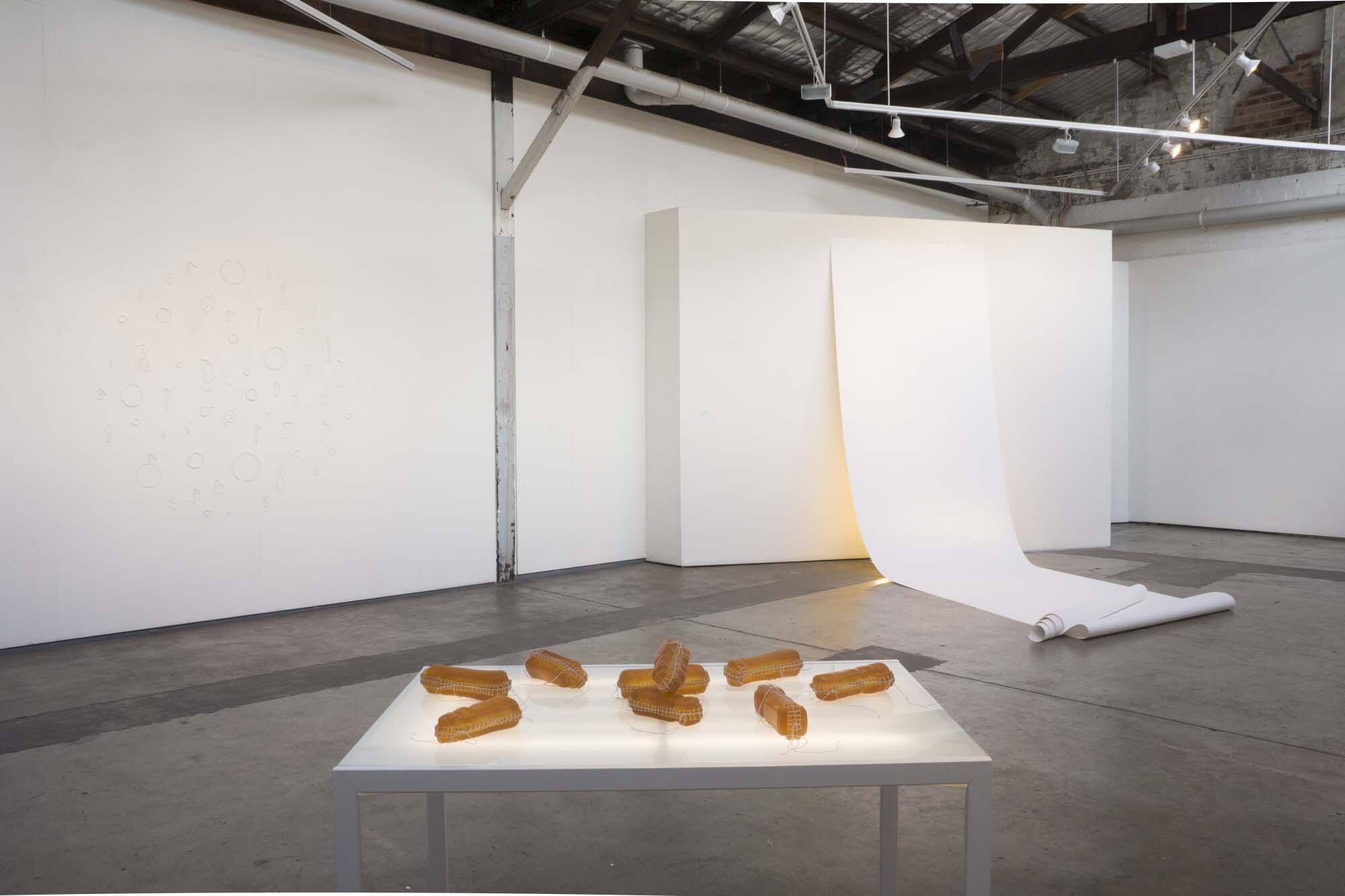
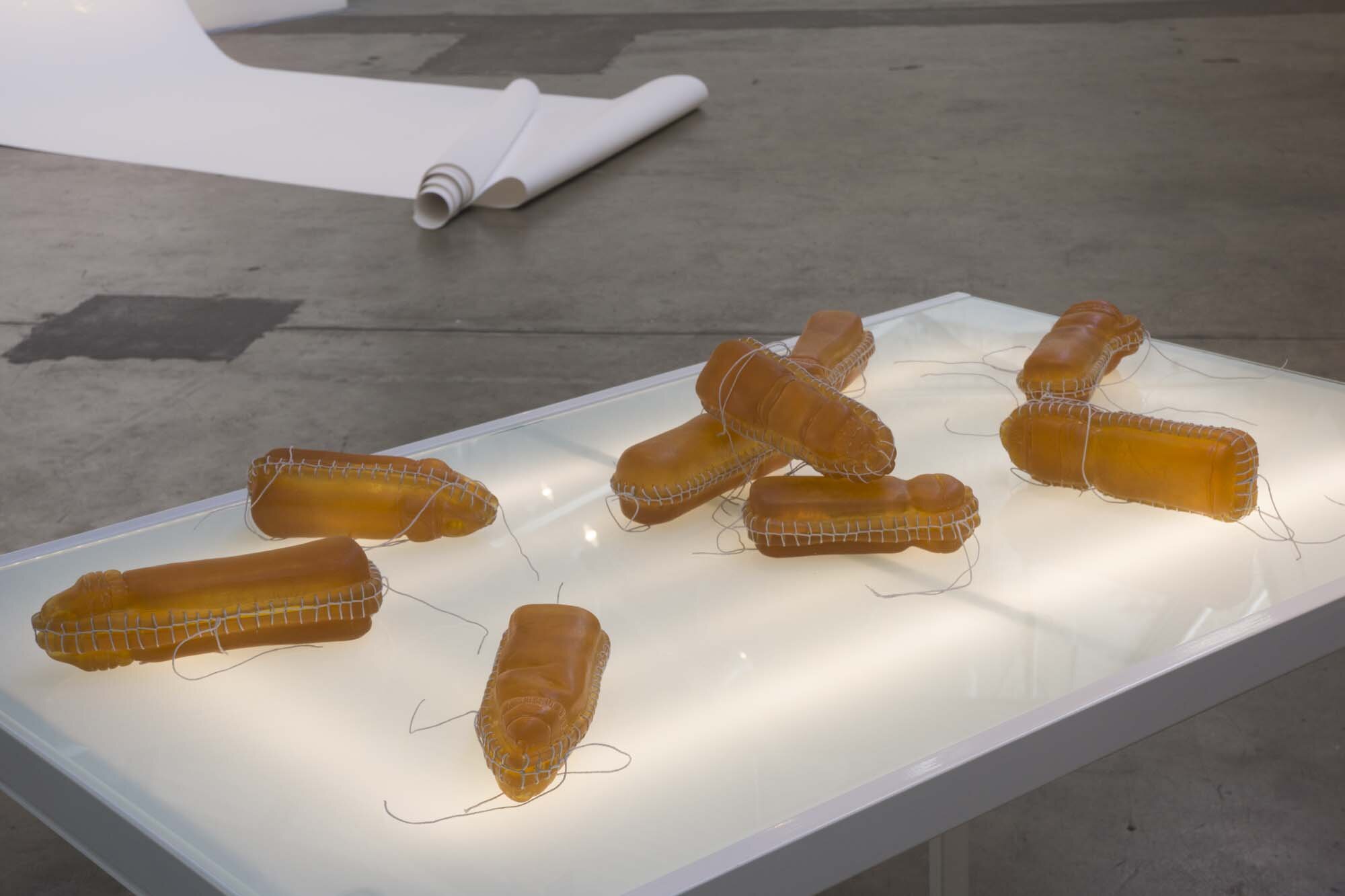
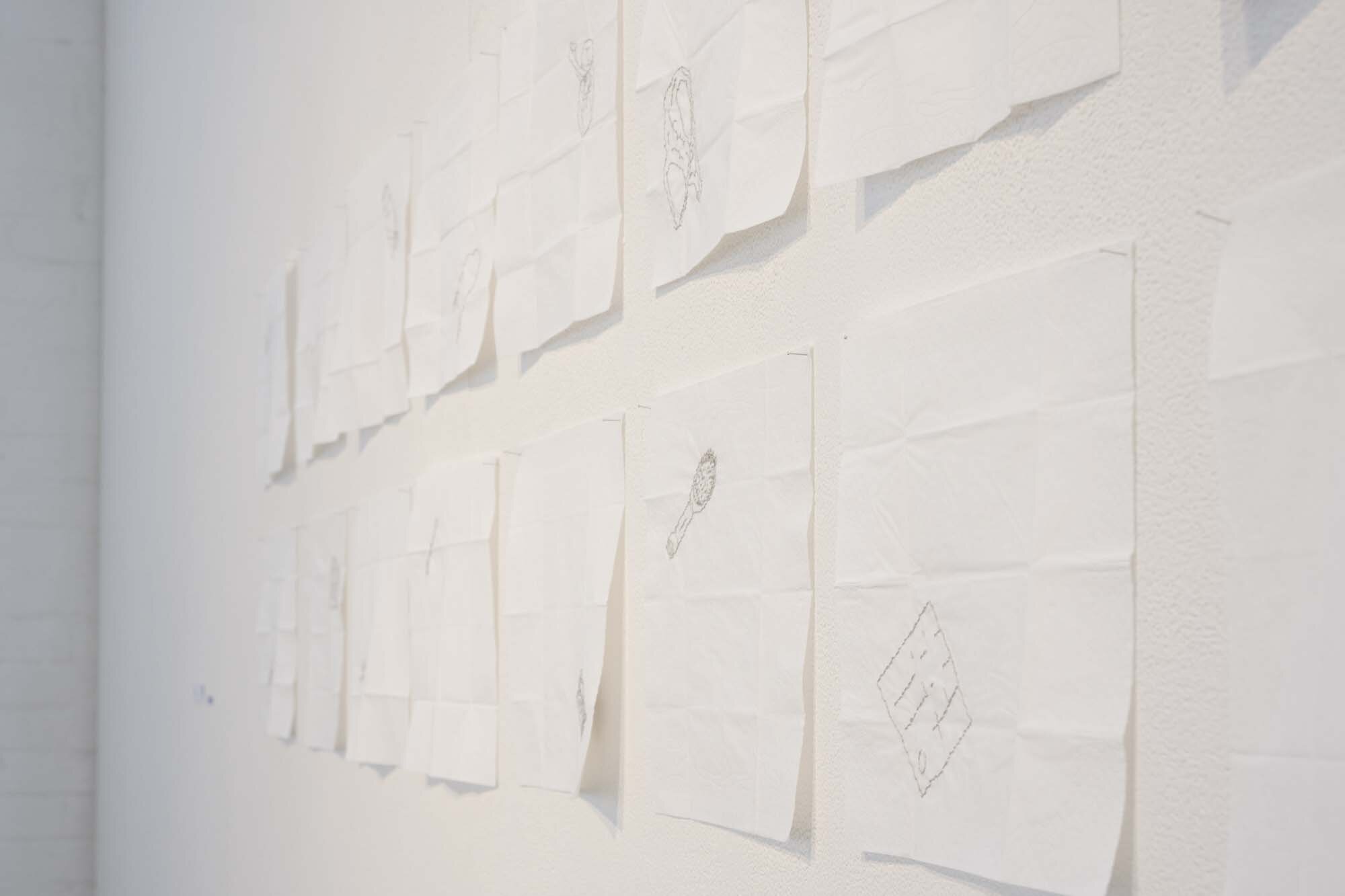

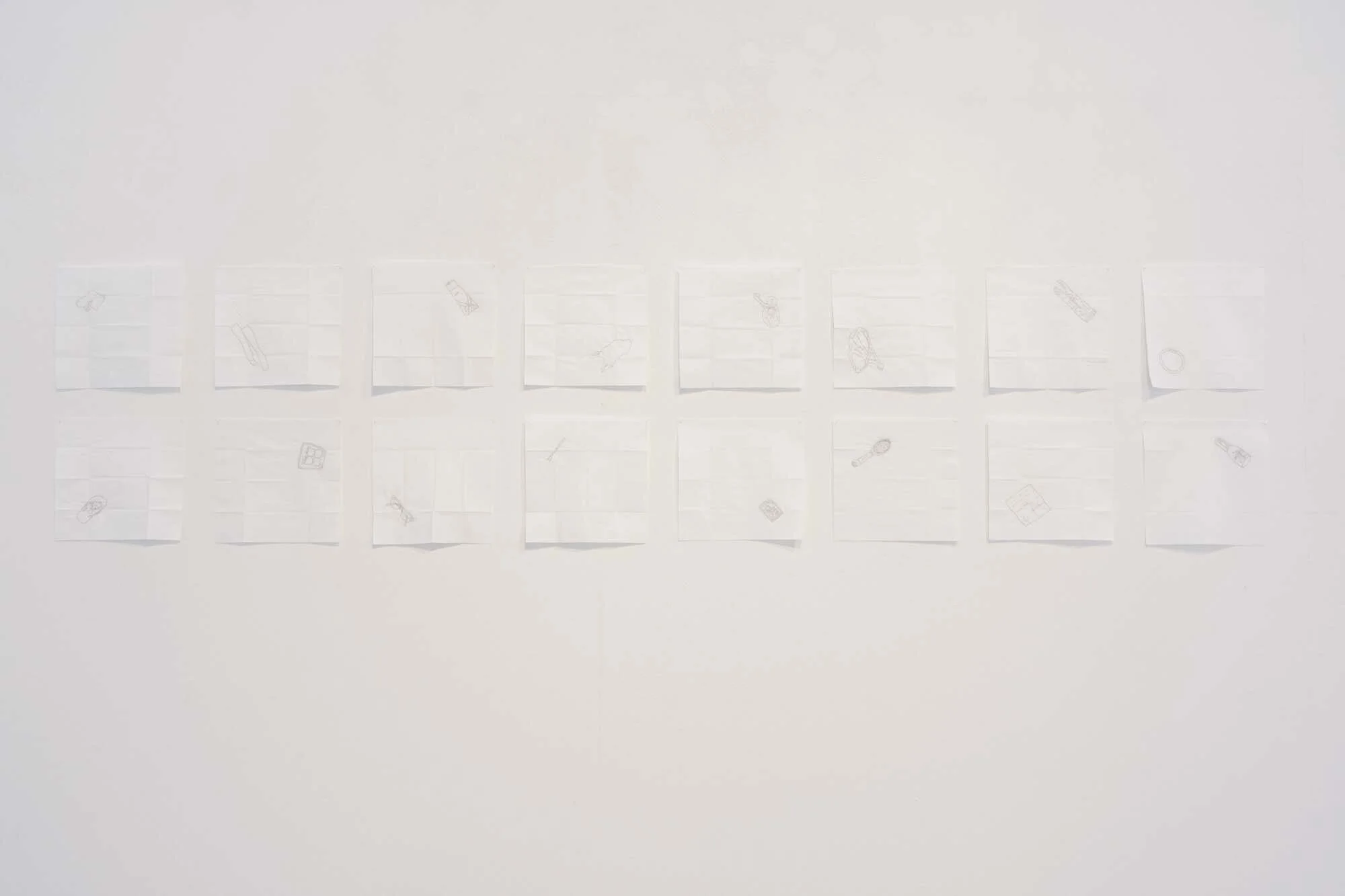
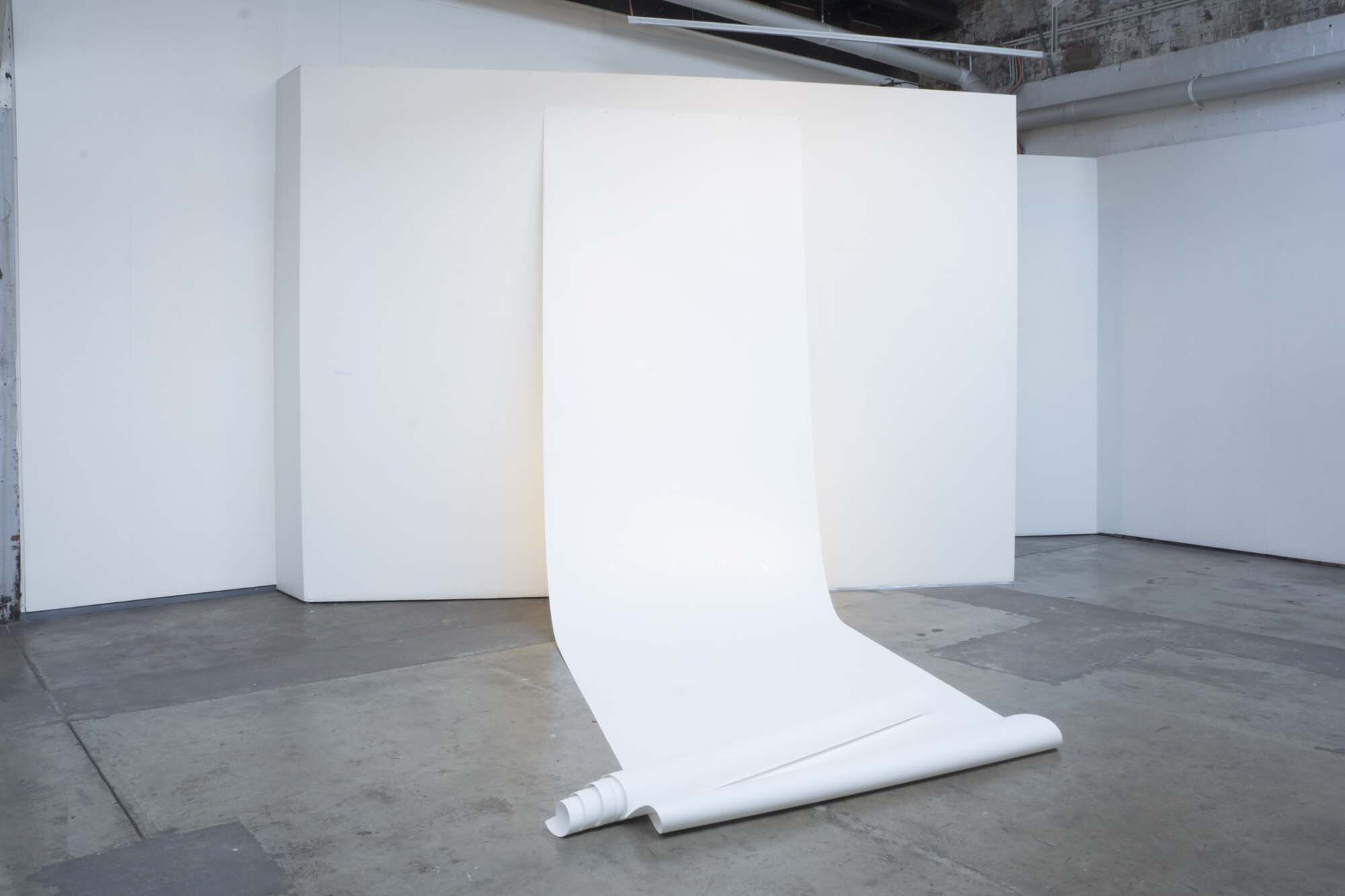
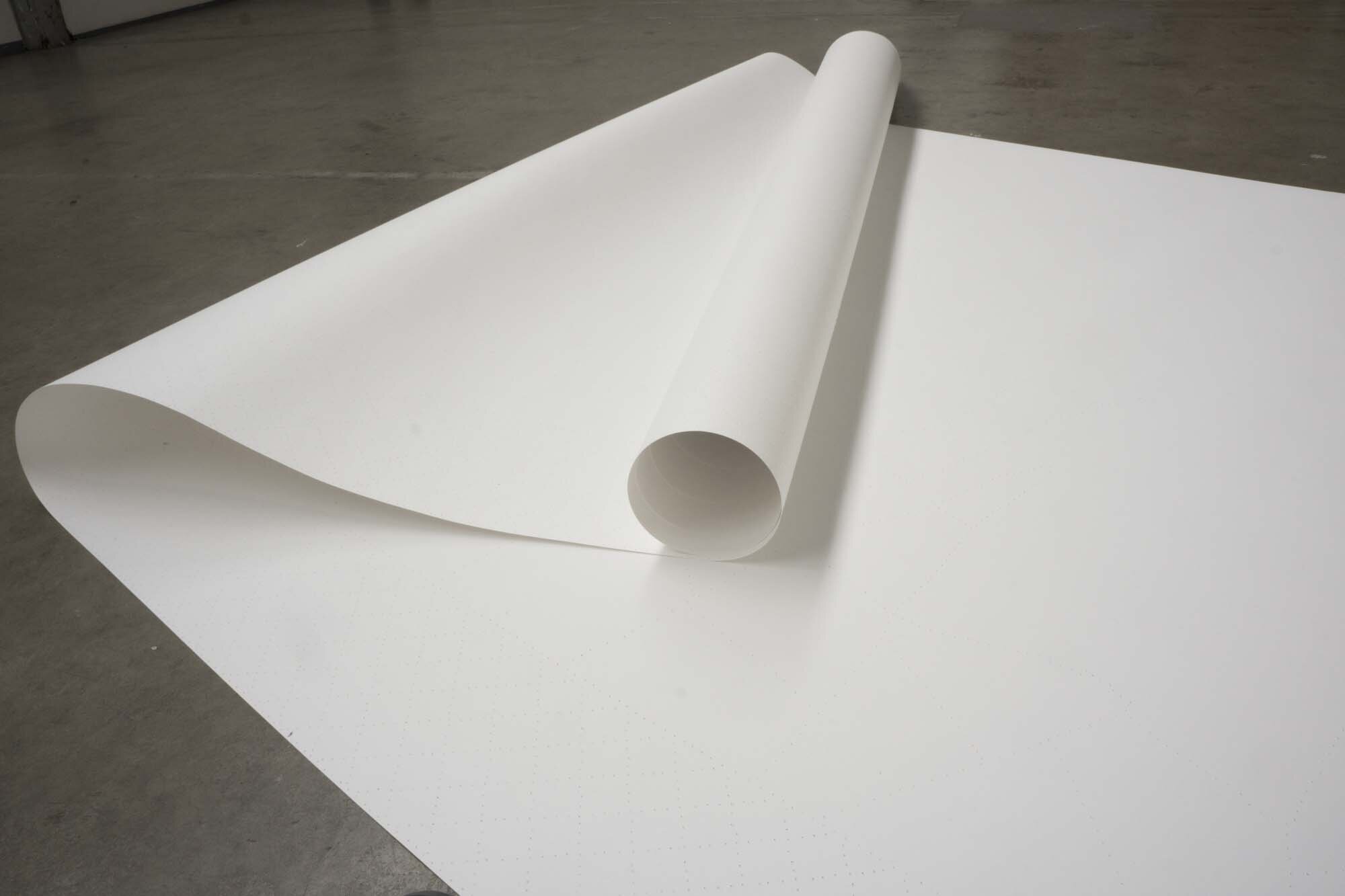
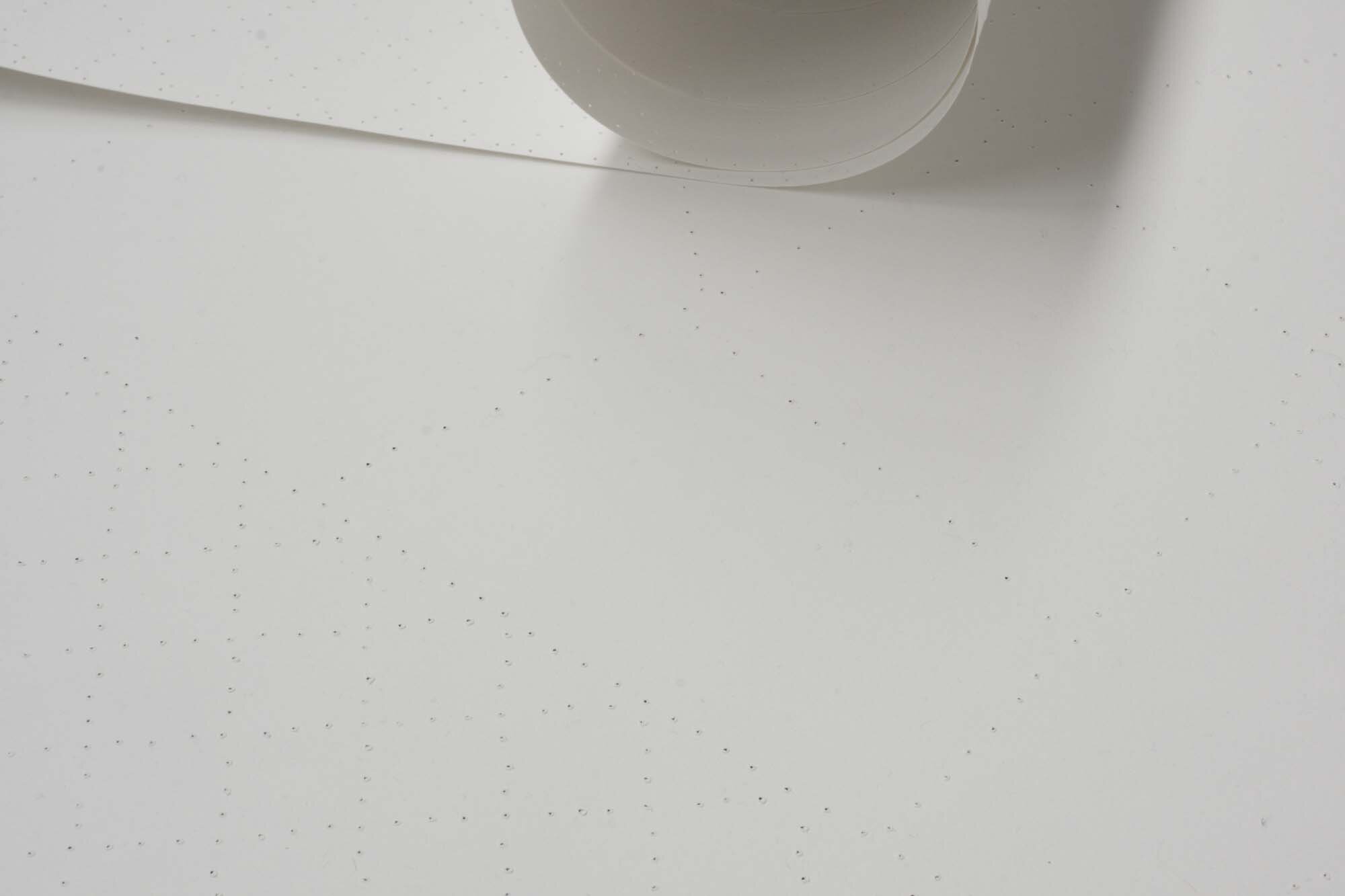
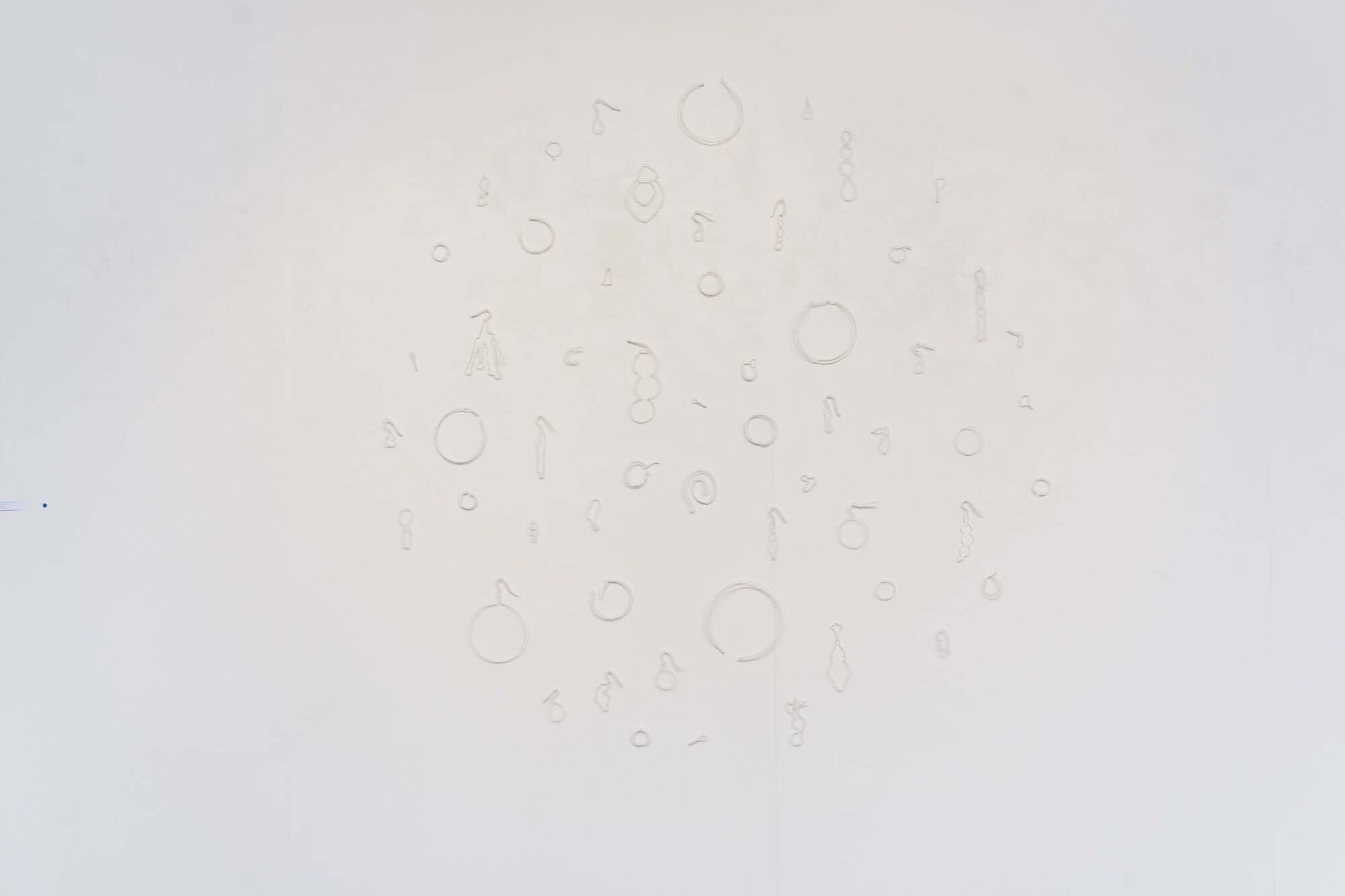
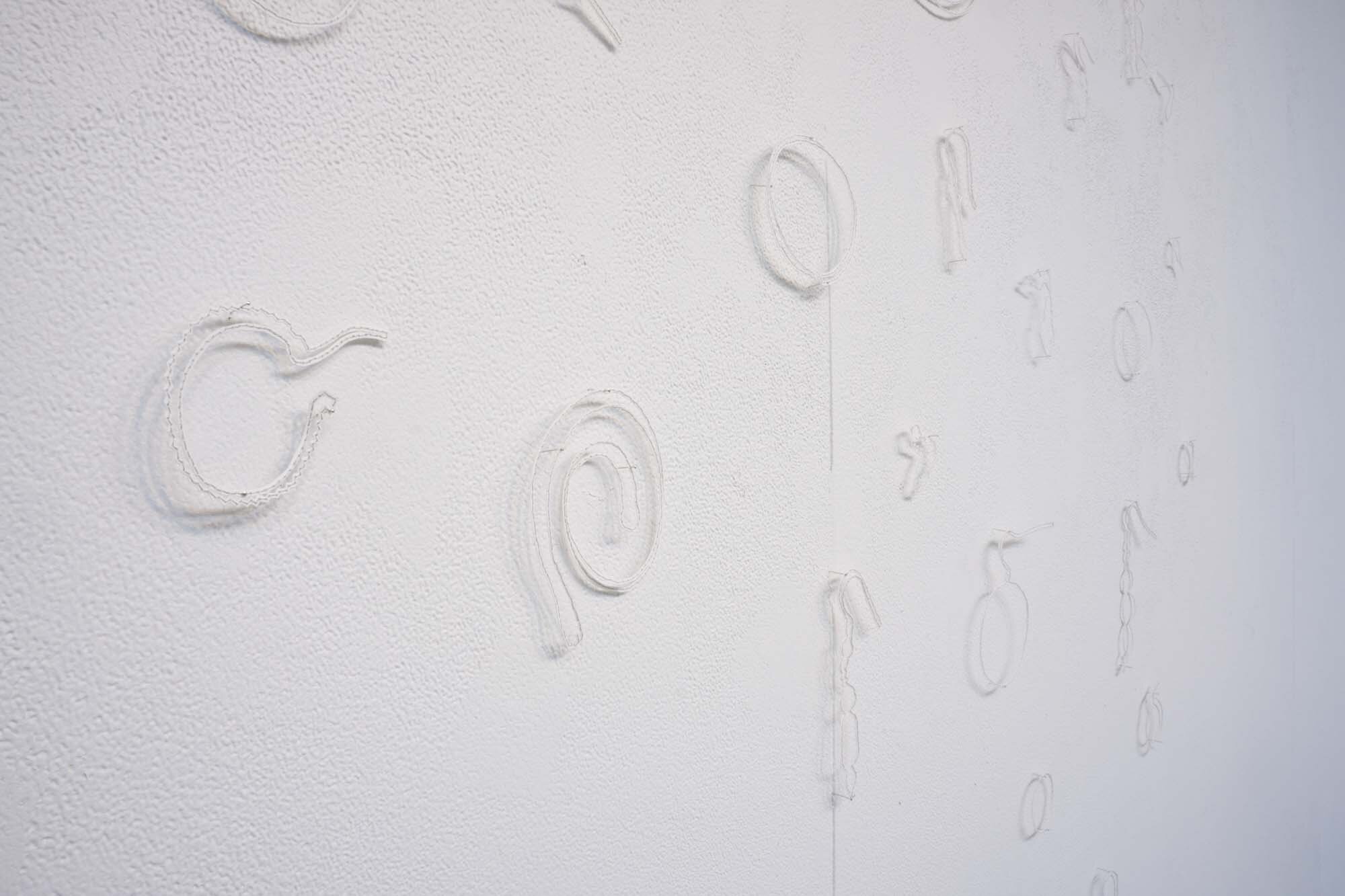
Niomi Sands, lost and found, 2016, (installation view). Courtesy of the artist. Photographer Izabela Pluta